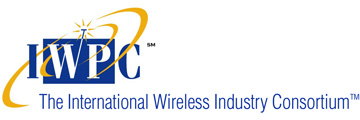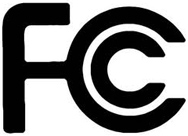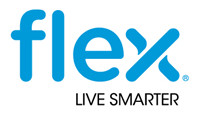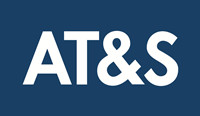IoT Networks,
Connected Sensors,
Use-Cases, Innovation and Technologies
Considering licensed and unlicensed technologies and mmWave innovation for future applications and use-cases, including telco, automotive, imaging, satellite, IoT,
artificial intelligence and robotics.
Hosted by:

Keynote by:
When
May 15 - 17, 2018
Introduction
Considering new frequency bands as an extension of existing cellular use-cases and how sensor connectivity relates to existing 4G and to 5G. Exploring connected sensors for new use-cases to mimic human sensory systems - Robots, Artificial Intelligence (AI) – What role will THz and higher frequency bands play – considering how this will come into the market place and what will the challenges be for antennas etc.
Workshop Goals
- What is the business case for IoT beyond low throughput M2M
- What bands are being considered
- What are the emerging IoT use-cases (i.e. robotics, cars, etc) and their respective implications
- What is the state of the art in embedded modems, multiband mmWave products, fixed wireless, and smartphones?
- Which bands will show up first, what will be twinned?
- How do robots mimic humans 5 senses? High frequency – Vision, Low frequency - Hearing, etc.
- Automation is currently mainly wired in factories - will this go wireless - how does this relate to IoT?
Agenda
|
DAY 1 Tuesday 7:00 PM |
Evening Reception & Registration |
At Hotel |
|
DAY 2 Wednesday 7:00 AM |
Breakfast & Registration |
|
|
8:00 AM |
Welcome and Introductions
|
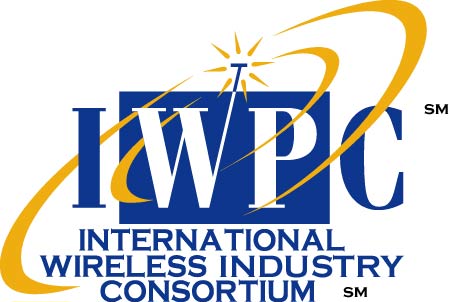 |
|
9:00 AM |
Keynote |
Keynote Presentation - FCC Spectrum Activities: Fueling the Internet of Things
Chief, Office of Engineering and Technology
|
|
10:00 AM |
Networking Break |
|
|
10:40 AM |
Extending Existing Cellular Use-Cases
|
Keynote Presentation
Director, Tech. Architecture Group
Journey Towards NB-IoT
Principle Engineer
|
|
12:00 Noon |
Networking Lunch |
|
|
1:00 PM |
Extending Cellular Use-Cases, continued
|
Stand-alone Deployment of Cellular IoT – Technical Challenges and Opportunities
VP, Technology Development
Security for Battery Efficient IoT
Distinguished Engineer, CTO Office
|
|
2:20 PM |
Connected Sensors
|
Performance Expectations for Embedded Antenna Options for Small Devices and Sensors
VP Engineering
|
|
3:00 PM |
Networking Break |
|
|
3:40 PM |
Connected Sensors, Continued
|
Challenges with 5G Spectrum
Principal Technology Strategist
Enabling Advanced Intelligence in Industrial Markets with mmWave Sensors
Business Development Manager
|
|
5:00 PM |
Panel Discussion Addressing regulatory challenges and opportunities |
Key Staff Members
|
|
5:40 PM |
Adjourn |
|
|
7:00 PM |
Networking Dinner - Gadsby's Tavern |
Bus transportation provided - bus to depart from hotel at 6:30 pm |
|
DAY 3 Thursday 7:00 AM |
Breakfast |
|
8:00 AM |
Connected sensors, continued
|
Rethinking Security – High-footfall screening for protecting crowded places
UK Government Security Specialist
Radar for IoT: from 7GHz to 140GHz
Director IoT
Semiconductor Technology Powering mmWave Communications Systems
Engineering Director
|
|
10:00 |
Networking Break |
|
10:40 |
Connected Sensors, Continued
|
Why Sensors Performance Matters
Senior Director Ecosystem
Accelerating IoT Development Through Flexible LPWAN Development Tools
Senior Director, Connectivity Center of Excellence
|
|
12:00 Noon |
Networking Lunch |
|
|
1:00 PM |
Connected Sensors, Continued
|
Displacing Lidar with a 4-D High Def mmWave All Weather Imaging and Mapping Radar
Director, Product Development
RFNav. Inc.
mSAP, Embedding and 5G/Sensor Integration
Director, Business Development
Path to a Vendor neutral, secure RTOS for IoT Sensors
Sr. Director, Strategic Programs
|
|
3:00 PM |
Networking Break |
|
3:40 PM |
Closing Discussion |
FAQs
- What is the deadline for presentation/handout materials?
- What can I do to prepare for speaking an at IWPC workshop?
- Who are the attendees?
- What are the costs/registrations fees?
- Hotel information?
- What are the travel options from the airport to the hotel?
- Are there any audiovisual requirements?
- Will business cards be collected?
- What is the dress code?
- How will handout materials be provided?
- What is the deadline for
presentation/handout materials?
Deadline for electronic version of presentation/handout materials: Monday, May 7, 2018
- What can I do to prepare for speaking an at IWPC workshop?
Click on the link below for a short video guide regarding preparing for and improving your IWPC presentation:
- Who are the attendees?
- We do not permit the Press.
- We do not permit Analysts.
- We do not permit Consultants.
- We do not permit 3rd party sales reps.
- We only permit "first hand knowledge experts" in business and technology issues, prepared to contribute to the discussion.
- What are the costs/registrations fees?
ALL Hosts, Speakers, Panel Members and Attendees will be asked to cover out-of-pocket workshop costs such as conference room costs, food (Social Reception plus First Day breakfast/lunch/dinner plus Second Day breakfast/lunch plus Breaks), audio/visual costs, etc.
These costs will be $999 (USD) per person. (For IWPC Members only.)
ALL Hosts, Speakers, Panel Members and Attendees will be asked to pay this fee in advance with either Visa, MasterCard, American Express, cash, personal check or business check. Make checks payable to IWPC.
- Hotel information?
DoubleTree by Hilton Washington DC-Crystal City
300 Army Navy Dr
Arlington, VA 22202 USA
Phone: +1-703-416-4100
Hotel WebsiteThe IWPC room block rate is $269/night. The deadline for hotel reservations is Tuesday, May 1 2018. After that date, rooms cannot be guaranteed at the IWPC rate. You can make your reservations on-line at: book your group rate for IWPC
- What are the travel options from the airport to the hotel?
- Are there any audiovisual requirements?
A Computer Projector will be available for the speakers.
In addition, we audiotape all presentations and the interactive discussions. Post workshop, presentations are made available to IWPC Members on the IWPC WEB site, along with “recordings” of all presentations and panel sessions.
- Will business cards be collected?
Business cards will be collected at the door from all attendees. We will make copies of these cards, which will be available to all who provided a business card.
- What is the dress code?
Business casual suggested. No ties, please!
- How will handout materials be provided?
For ALL IWPC members:
All IWPC members are invited to submit materials to be included in the online workshop folder in the IWPC Research Library. This should NOT BE SALES MATERIALS. Rather, we suggest it contain technical information about your technology as it relates to the workshop topics.
For all companies who will be making a presentation at the Workshop:
You are invited to submit an advance copy of your presentation, complete with graphics and illustrations.
These materials will be included on the IWPC website Research Library.
Please submit these materials either by email, as a Word for Windows file, Power Point files or PDF files.
- Go to www.iwpc.org
- Click on IWPC Activities Tab
- Under Workshop: IoT Networks, Connected Sensors, Use-Cases, Innovation and Technologies
- Click on Submit Presentation Proposal. Complete the form and attach your presentation.
- Once we receive your presentation we will send an email confirmation.
AS BACKUP, PLEASE BRING AN ELECTRONIC COPY USB STICK WITH YOU!
